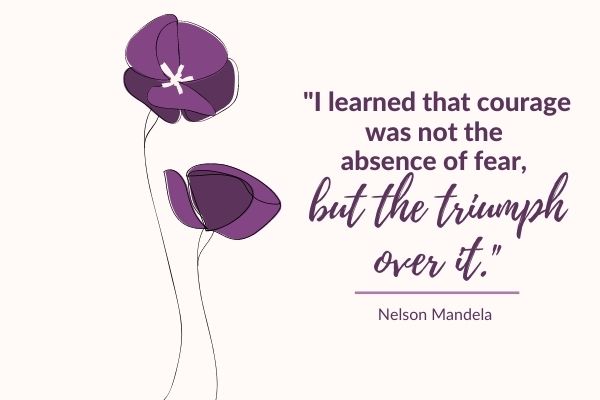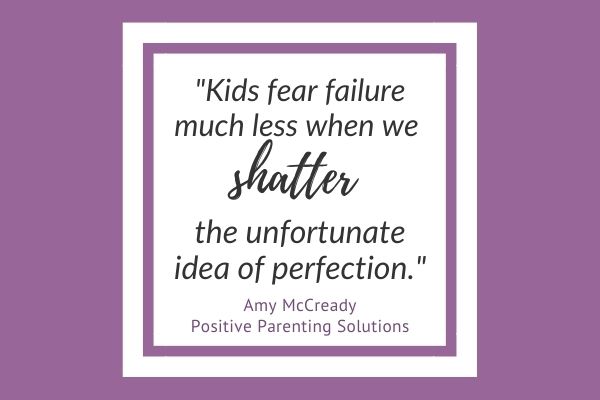
We want to make the world a better place for our children, but it’s not always possible.
If only we could ignore that painful fact.
Instead, we have to broach tough topics like chaos, sadness, and uncertainty–things we’re often confused by ourselves.
We’ve lived through a modern pandemic. We see war ravaging many parts of the world. And we’re burdened by grief.
We see politics growing in dissonance and families with varying beliefs torn apart.
And the news is always negative, darkened with mass shootings, terrorist attacks, and natural disasters.
Things are…hard. They always have been, and they always will be. But if there’s one thing parents are designed to do, it’s to help kids survive a sometimes unforgiving world.
In hopes of assisting, I’ve compiled a few ways to navigate the topic of tragedy with our kids in all its various forms.
Having a Difficult Conversation With Kids
Let me start by saying that it’s good to have difficult discussions.
You may be grasping for the right words or feel like crying–or cringing–at the sight of an innocent face asking for real, raw answers. But from tragedy to the birds and the bees, tough conversations are crucial.
Maybe you’re trying to explain to your children the intricacies of racism. Or, you’re trying to ease a daughter’s grief over her grandmother’s death.
It could be making sense of a next-door neighbor’s house robbery or a pet run over by a car.
In all of these scenarios, kids need honesty. How deep we delve just depends on their ages and level of understanding.
“The American Academy of Pediatrics (AAP) encourages parents, teachers, child care providers, and others who work closely with children to filter information about the event and present it in a way that their child can understand, adjust to, and cope with.” — HealthyChildren.org
The same article also gives examples of how to talk to children of various ages about tragedy. It states, “…no matter what age the child is, it’s best to keep the dialogue straightforward and direct.”
If your response is followed by an endless stream of why questions, it’s also okay to say, “I don’t know.”
Then, be inspired by Mr. Rogers, who said, “When I was a boy and I would see scary things in the news, my mother would say to me, ‘Look for the helpers. You always find people who are helping.’”
Focusing on the people who are working to ease suffering will not only help your child focus on the good, but also empower them to make a difference.
Alternatively, an older teenager that understands the deeper implications of a school shooting might need more explanation.
“Some people really struggle with mental illness and don’t get the help they need. Psychologists are still trying to understand why they decide to hurt others.” And, “While schools try their best to stay safe, they can’t always be protected against this type of violent attack.”
It’s important to have these conversations in a safe, quiet place. It can be in the comfort of your home or on a long car ride, but somewhere familiar enough to provide a structured, loving environment.
It’s also important to balance two distinct strategies: staying calm and modeling real feelings.
Staying Calm
Tragedy can feel overwhelming. But simply using a soft verbal tone can counteract any unease and intensity to help kids feel grounded.
One of the tools we teach in our 7-Step Parenting Success System is the Calm Voice. It’s applicable at any time, but is especially useful in emotionally-charged situations.
It can be as simple as speaking softly and slowly, but you’ll find it takes everyone’s feelings of fight or flight down a notch. From a screaming toddler tantrum to overwhelming feelings of grief, it paves the way for discussion and healing through subtle confidence and strength.
Pro Tip: For Positive Parenting Solutions members, please review Step 2 of the 7-Step Parenting Success System.
Staying calm doesn’t mean we’re unfeeling robots. We aren’t ignoring our emotions or the issues. It just means we’re ready to discuss/process our feelings with more control.
Because it’s not only important to discuss the circumstances of tragedy; it’s equally important to discuss the emotions surrounding them.
Modeling and Managing Real Feelings
While we don’t want to completely let loose our own feelings of anger, sadness, or despair, it is okay to express negative emotions. After all, we want kids to know these feelings are normal.
Shoving dark feelings down deep isn’t going to help us or our kids in the long run. That’s why having difficult discussions through open communication–and modeling the realm of emotions they’ll face in life–is so important.
Maybe you’re prone to getting worked up when you hear bad news from friends or family. You’ve slammed a few doors and said a curse word or two.
Instead, try working on your reactions by taking deep breaths and counting out loud from one to ten. You can explain to your kids that this helps you calm down.
And don’t be afraid to cry when you really need to. This is a normal and healthy way to release emotion! Crying in front of your kids shows them it’s okay to let those tears flow, but, it also helps to accompany it with an explanation. According to this article, you can “Let your kids know you’re crying because you’re sad, happy, angry, frustrated or touched.”
Crying can also be followed by thoughts and words of encouragement–either for yourself or your children.
You’re still acknowledging that strong feelings affect you, but you’re also offering solutions for dealing with them.

Or maybe you’re seething from a sudden job loss and wondering how you’ll pay the bills. So, after a few months of job applications and zero interviews, you join a neighborhood kickboxing club to release your frustration. It’s a healthy and proactive outlet for your feelings.
Your teenage daughter observes your frustration, as well as the actions you take to manage it. You also explain the reason for your actions, to make sure she understands you’re managing your worry and stress.
“As you know, I’ve been feeling and acting a little overwhelmed these past few months while looking for a new job. That’s why I’ve decided to join this kickboxing class! It makes me feel better and stronger and keeps my stress levels down.”
Less than a year later, in a moment of extreme anger over a friend’s recent suicide, she contemplates punching the wall. Instead, she reconsiders. She decides to join you at your weekly kickboxing club.
She saves the wall (and her hand) in exchange for a punching bag. And it was all thanks to your example.
Turning an Imperfect World into a Learning Opportunity
As much as it hurts, exposure to tragic events imparts emotional intelligence and prepares kids for a future full of challenges.
So, while it’s natural to censor our kids from more tragedy than necessary, allowing them that glimpse of harsher reality is beneficial.
Here are 3 distinct ways to pivot your tragedy conversation towards meaningful, powerful life lessons:
1. Resilience Through Imperfection and Failure
Tragedy teaches us that life isn’t a perfect, utopian fantasy. It’s so imperfect, in fact, that bad things happen to good people ALL THE TIME.
The earlier kids learn things won’t be perfect in their lives, the more adaptable they’ll become. They may still feel sideswiped by their mishaps or uncontrollable tragedies, but they’ll be prepared to make adjustments.
Their setbacks will make them stronger.
Some of life’s biggest disappointments occur as perceived failures. High school students bomb their SATs and get rejected from the college of their dreams. Injured ballet dancers miss the big performance they worked for years to earn a place in. Brilliant inventions fail to garner investments.
Younger kids might break an arm or a finger at the playground and learn their bodily limits. They may even fail in less impactful ways, like falling off their bikes 30 times before mastering how to ride. Even these small mishaps can teach the beginnings of resiliency.
Kids fear failure much less when we shatter the unfortunate idea of perfection. From playing the piano to flawless social media posts, kids face personal and peer pressure to do everything well.
But failure isn’t bad. It’s how we improve.

This lesson can be especially valuable for more entitled kids. They expect things to always go well and might be unfamiliar with hardship. But while we want our children to live happy lives, we don’t serve them well without teaching them to bounce back from misfortune.
So, whether it’s a mass shooting, a terrorist attack, or a natural disaster, let your kids experience a small portion of the emotions it generates. They will understand that what seems incomprehensible and unbearable really isn’t–and that we must move on from each obstacle.
2. Tragedy Enhances Empathy and Gratitude
In an instant, tragedy gives a whole new perspective.
“The fire destroyed their house–but not just their house. It destroyed their beds, their toys, their photo albums full of memories…
BUT, you know what? As devastating as that is, we can take comfort in knowing their lives were saved. That’s all that matters.”
With any tragedy, it’s important to take a few moments for reflection.
We can start with compassion and extend feelings of sorrow to those impacted by the tragedy. This way, kids learn to feel and show empathy from even the earliest of ages.
Next, we can use a tragedy to be grateful for what we have. Unlike the family stricken by fire, we still have our warm and cozy beds, toys, and most importantly, a roof over our heads. We won’t have to live in a hotel or with friends while waiting to see if insurance will pay for a new house. And we don’t have to try to replace what’s been lost.
Finally, we can focus on what good–if any–has come out of the tragedy. In the scenario above, it was the family’s survival. In other tragedies, it could be an extended family coming together, or an entire community gathering to support one another.
Sometimes, it can be a stretch to find that silver lining–but it’s SO important.
It could be the thread that keeps us hanging on.
3. Now Is the Time to Encourage Action
Once kids learn that not all tragedies can be prevented, they can move on to what they can control–their own actions.
Making a difference starts with helping. It could be making a family donation for recent hurricane victims, or writing a condolence letter to a friend that lost a family member.
Maybe there was a mass shooting in a local city or nearby state. You can show support for the affected families by attending the candlelight vigil.
You don’t have to wait until tragedy strikes, either.
Ask your kids of any age how they’d like to improve the world. A 4-year-old might suggest “free candy for all,” while a tween might suggest a (more practical) food drive. But the key is to introduce them to the idea of being thoughtful and proactive in their communities and their own lives.
It can be as simple as showing kindness: maybe towards the new kid in school who just moved after his parents’ divorce, or to the newly widowed next-door neighbor who needs help shoveling her driveway.
It’s then thinking about bigger issues, like how to repurpose plastic water bottles or removing litter from the beach to help the troubled environment. It’s giving grocery store gift cards to the curbside homeless woman or helping you organize a local fundraiser for the children’s hospital.
Because when it comes down to it, making the world a little less sad takes one small action at a time.
Final Thoughts
The inability to thwart tragedy means learning to live with it. But we can also learn from it.
So, talk to your kids about the tough things. Then, make a pact not to let those obstacles keep you from living full, intentional lives.
Let’s not let the pain and suffering pass by in vain.
What You Should Do Next:
1. Subscribe to my Newsletter:
Sign up for my newsletter for parenting tips to help you create a happier home and become the parent you always wanted to be. Plus, when you subscribe, I’ll also send you a copy of our strategy-packed guide 10 Tips for Better Behavior – Starting NOW!
2. Register for my FREE 60-Minute Class:
Register for my free class called How to Get Kids to Listen, Without Nagging, Yelling or Losing Control. Classes run several times per week but I recommend you register early, as spaces are limited.
3. Enroll in my 7-Step Parenting Success System
Enroll now in my proven 7-step system for busy parents ready for change (it’s rated 5 stars on Google). Plus, for a limited time, save 10% plus get a FREE upgrade on all plans—completely risk-free and with lifetime access.
About the Author

